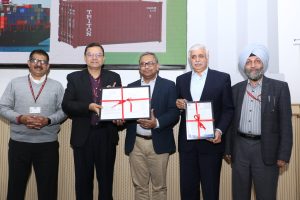India marching to game changer 6G ecosystem

Telecom Minister Ashwini Vaishnaw inaugurated Nokia's 6G research laboratory
By Sanjay Singh
New Delhi, October 13: India is fast moving towards creating a system for developing a 6G ecosystem that is all set to change the way we use our mobiles and the benefits we draw from it.
Recently, Telecom Minister Ashwini Vaishnaw inaugurated Nokia’s 6G research laboratory in India in line with Prime Minister Narendra Modi’s vision to transform India into an innovation hub. Nokia announced the establishment of a 6G laboratory at its global research and development Centre in Bengaluru. This was unveiled virtually by the Union Telecom Minister.
Though India is already making substantial leap in 6G technology, securing over 200 patents through collaborations between industry, academia and related stakeholders with Department of Telecommunications at the core of it, the sector is looking at expediting the development of foundational technologies and innovative applications supported by 6G technology which aims to address the future needs of both mobile users and the telecom industries.
The United Nations body ITU’s Study Group have also accepted India’s proposal for ubiquitous 6G technology coverage during a meeting in Geneva in September 2023.
Nokia, a Finnish telecommunications equipment manufacturer, its 6G laboratory will serve as a collaborative platform for telecom sector stakeholders, which will also enable testing and commercialization of innovative solutions. The 6G lab will also provide an experimental platform for expanding research in sustainable system design, algorithms and privacy.
According to Union Telecom Minister, 6G research and outcome will help align with healthcare, education and massively push India’s pan India digitization. The 6G, is also going to boost ‘Network as a Sensor’ which is considered a crucial technology that brings together the digital and physical world.
Currently, 6G technology is in a nascent stage and its exact impact on human lives will depend on how it evolves and is eventually implemented. These include enhanced IoT capabilities, advanced AI integration, lower latency, remote work and collaboration, faster data speeds, Transportation and Autonomous Vehicles, Gaming and Entertainment, Education and Remote Learning, Healthcare Innovations.







